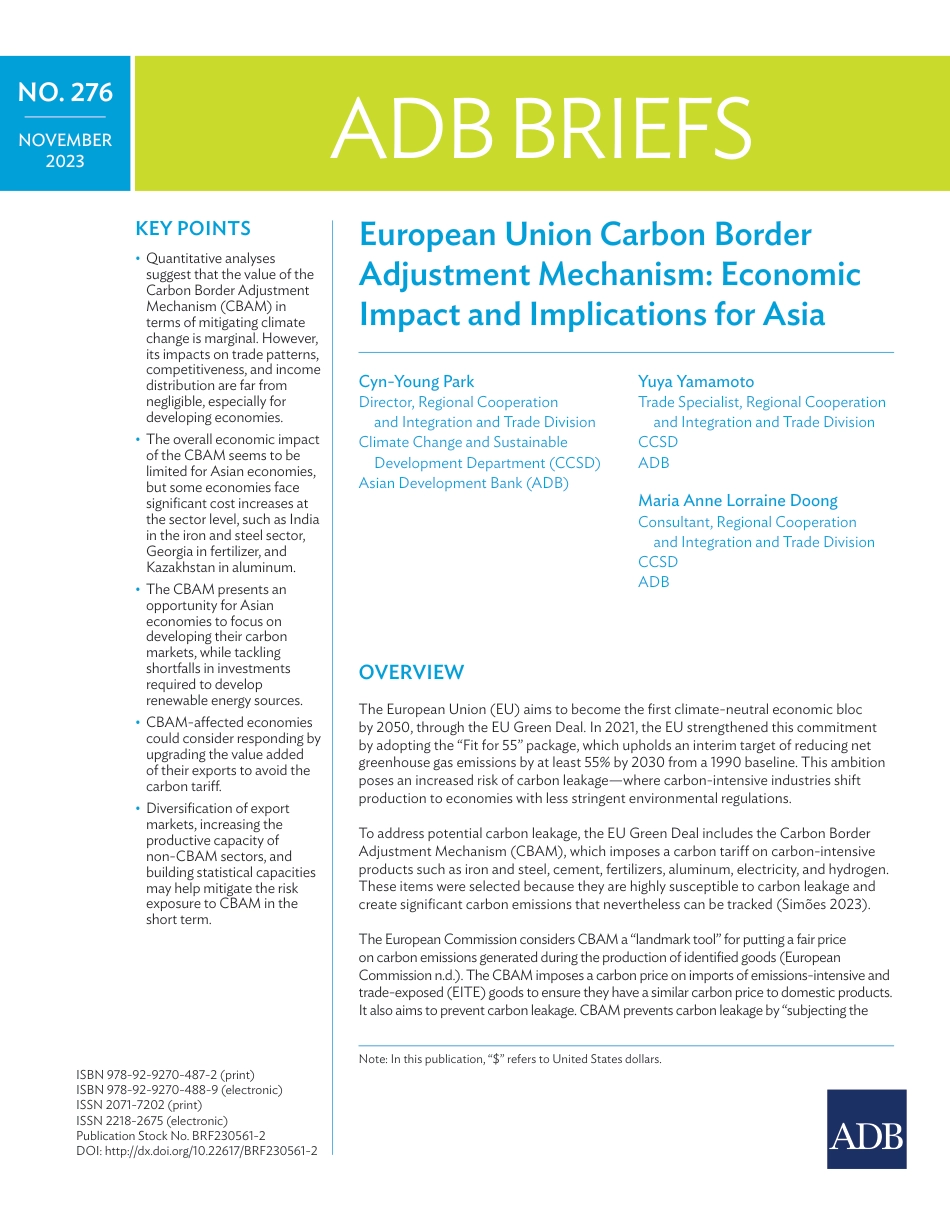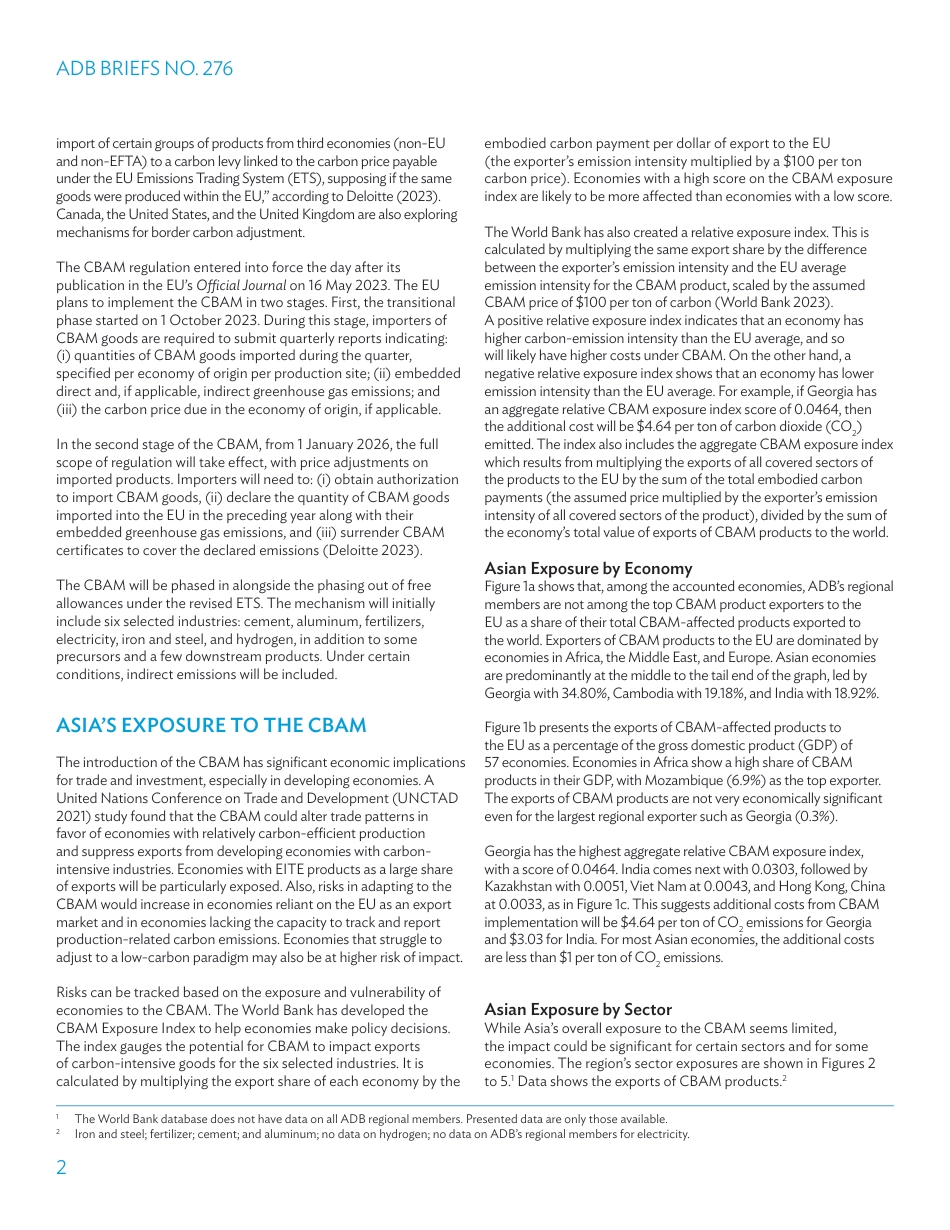ADB BRIEFSNO. 276NOVEMBER 2023ISBN 978-92-9270-487-2 (print)ISBN 978-92-9270-488-9 (electronic) ISSN 2071-7202 (print)ISSN 2218-2675 (electronic)Publication Stock No. BRF230561-2DOI: http://dx.doi.org/10.22617/BRF230561-2European Union Carbon Border Adjustment Mechanism: Economic Impact and Implications for AsiaKEY POINTS• Quantitative analyses suggest that the value of the Carbon Border Adjustment Mechanism (CBAM) in terms of mitigating climate change is marginal. However, its impacts on trade patterns, competitiveness, and income distribution are far from negligible, especially for developing economies. • The overall economic impact of the CBAM seems to be limited for Asian economies, but some economies face significant cost increases at the sector level, such as India in the iron and steel sector, Georgia in fertilizer, and Kazakhstan in aluminum. • The CBAM presents an opportunity for Asian economies to focus on developing their carbon markets, while tackling shortfalls in investments required to develop renewable energy sources. • CBAM-affected economies could consider responding by upgrading the value added of their exports to avoid the carbon tariff. • Diversification of export markets, increasing the productive capacity of non-CBAM sectors, and building statistical capacities may help mitigate the risk exposure to CBAM in the short term. Cyn-Young ParkDirector, Regional Cooperation and Integration and Trade Division Climate Change and Sustainable Development Department (CCSD)Asian Development Bank (ADB)Yuya YamamotoTrade Specialist, Regional Cooperation and Integration and Trade Division CCSD ADBMaria Anne Lorraine DoongConsultant, Regional Cooperation and Integration and Trade Division CCSD ADBOVERVIEW The European Union (EU...



